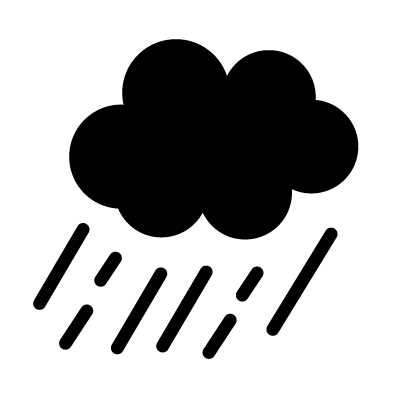Mushrooms in the city
in collaboration with Circular Landscapes. Amsterdam 2020-present
The city as a breeding ground
What does the available space in the city have to offer when it comes to food production? The power of our mycelium is an investigation into application and design possibilities for growing mushrooms in the city, an initiative of Plou.
Plou is a collaborative practice for spatial design, art and social innovation. We are architects, landscape architects and artists and we often collaborate in the field of food landscapes. The reason for this research is the realization that a transition is underway both nationally (circular agriculture) and local (food strategy), in which the short chain plays an important role.
The municipality of Amsterdam has high ambitions to produce food as close to the consumer as possible. The intention is that the supply of local food in Amsterdam will grow from about 5 percent to 25 percent over the next ten years (according to a new agreement of 30 October 2020). Nevertheless, we see that local food companies such as Containing Mushrooms are closing their business, and that Mycophilia is moving its production from Amsterdam Noord to Flevoland. Why can't Amsterdam offer serious space for food producers in the city?
Mushrooms are one of the few crops that could grow en masse in the city. Nevertheless, growing mushrooms locally and on a small scale does not appear to be a good business under the current circumstances. High land prices, no longer being able to supply restaurants (due to Corona), dominant supermarkets, complicated logistics and limited availability of nutrients from the area are some of the reasons why there are currently no mushroom growers in the city. But how can Amsterdam achieve its climate goals if they continue to import food unnecessarily from a great distance?
This research aims to investigate how we can bring mushroom growers (and other indoor farmers) back to Amsterdam: which locations and networks are needed, which additional functions can be linked to this, can we process organic residual flows from the city into raw material for new crops?
Oyster mushrooms in cellars
Amsterdam strives for local production, processing and distribution of food, for healthy and sustainable food, with less transport and less waste (Groenvisie 2020-2025 of the Municipality of Amsterdam). There are already many projects to make people more aware of the meaning of food, but is there also room for full-fledged food production in the city?
Oyster mushrooms are soil wizards that reuse everything that nature leaves behind. They are a textbook example of a circular organism, for example because they can grow on organic residual products, such as the well-known coffee grounds.
At the same time, oyster mushrooms grow in places where light does not necessarily come. They do best in the constant temperature, humidity and darkness of a cellar, just like chicory, for example.
Growing mushrooms on coffee grounds already happens in the Netherlands (think of Mycophilia, Gro Together, Rotterzwam or Fungi Factory). Such initiatives are doing relatively well due to strong marketing, supporting educational programs and processing mushrooms into long-life products, such as vegetarian bitterballen. In this way they reach a national sales market and compete with the wholesaler. But real short chains, namely the structural delivery of a fresh product to customers within walking distance in the neighborhood, are less successful. What is more logical than direct cooperation between local entrepreneurs? “I supply you with my coffee grounds (or other raw materials), you supply me with your mushrooms”. Why would we prefer to get our mushrooms from afar? What needs to change to make the transition from national to local?
At city level, we want to know which (public) urban spaces can be used to grow mushrooms or other indoor crops. We see the city as an ideal breeding ground for all kinds of micro-organisms that make few demands on their environment and yet have a high productivity. We also want to investigate how the city can contribute to closing cycles and which organic raw materials are available in the city for the circular production of food. Can discarded food be composted locally and serve as a source for a new growth cycle? Or is the cut grass of the city enough? Can we use rainwater as irrigation water for food production? Numerous solutions are conceivable whereby the food system within the urban fabric becomes part of a circular economy.
 Foto: Fungi Factory
Foto: Fungi Factory The city has a number of cellars available, such as the public bomb shelters from the Second World War and the Cold War. This card was published in Het Parool on 6 May 2017
The city has a number of cellars available, such as the public bomb shelters from the Second World War and the Cold War. This card was published in Het Parool on 6 May 2017 Air-raid shelter at the Weesperplein metro station
Air-raid shelter at the Weesperplein metro stationDistrict of Fungus
We imagine a “Stadsdeel-Fungus” that goes from farm to fork within a few hours, without the use of fossil fuels. We start with a feasibility study and one or more pilot projects, and work towards a profitable business case with a living and learning network.
By looking at both city level (network) and neighborhood level (pilot project), we want to investigate:
What are the biggest costs and obstacles? Are we going to grow mushrooms in cellars and dark empty garages in the city? Or should ship containers be placed at strategic locations in the city? Is it about an "underground" network of coffee shops, chefs, restaurants and foodcoops such as "farmers for neighbors" or "Support your locals"? Or should we focus on maximum visibility and accessibility? Can we combine the cultivation of mushrooms with other activities or crops and integrate into larger cycles? Could this initiative be an Amsterdam contribution to the donut economy?




